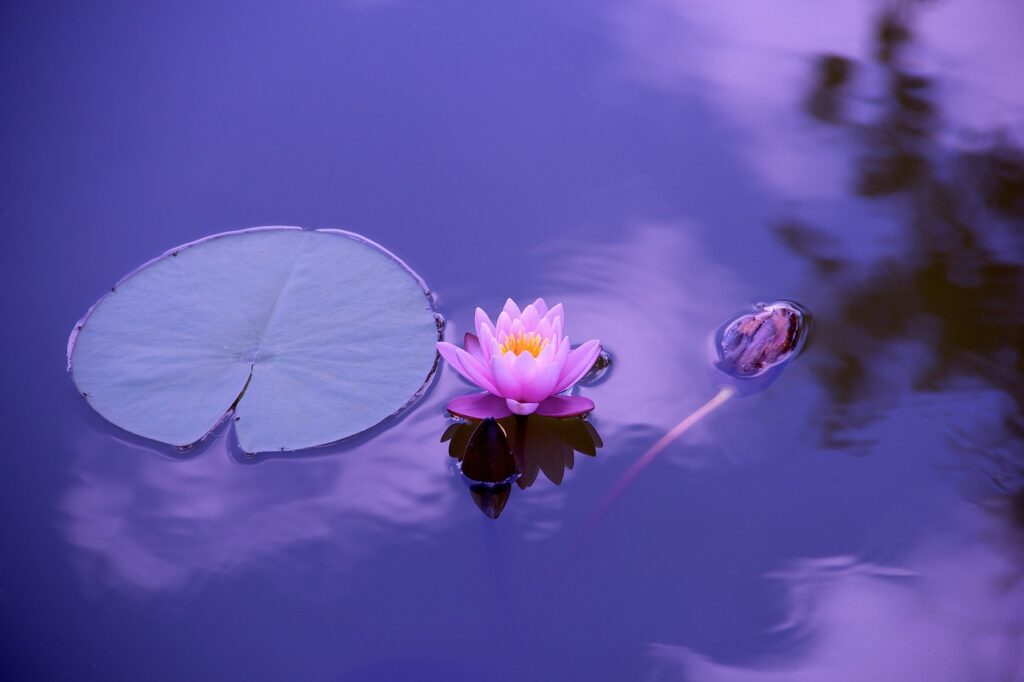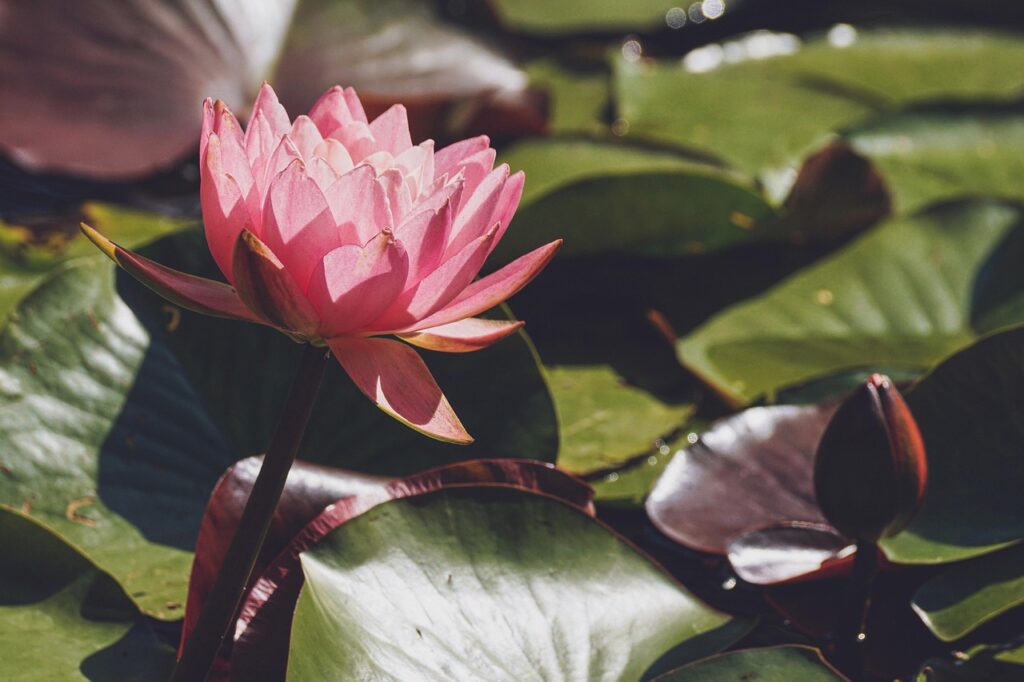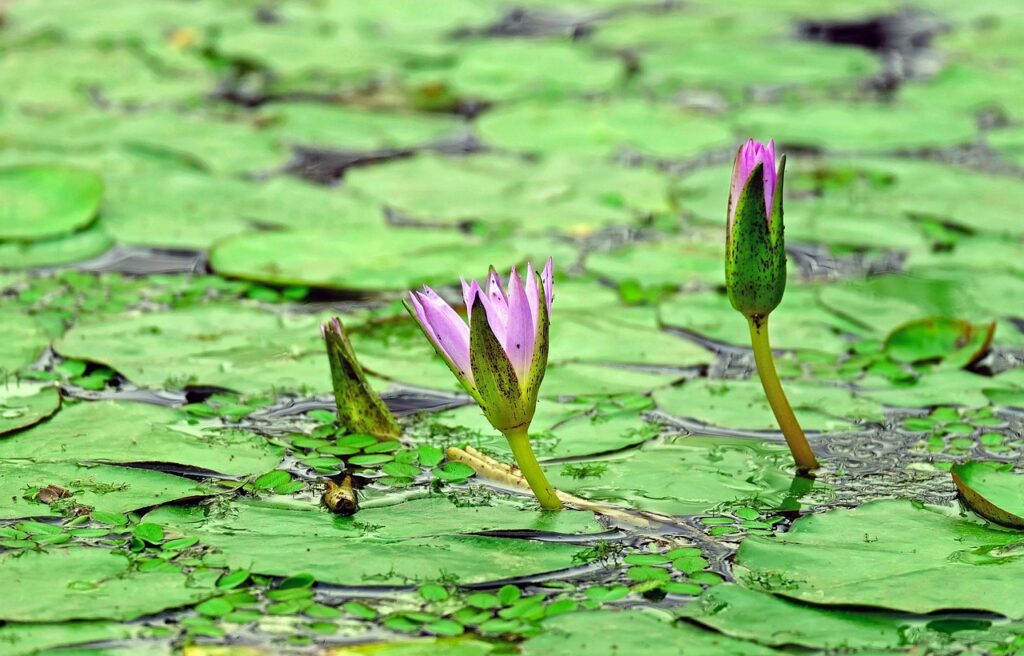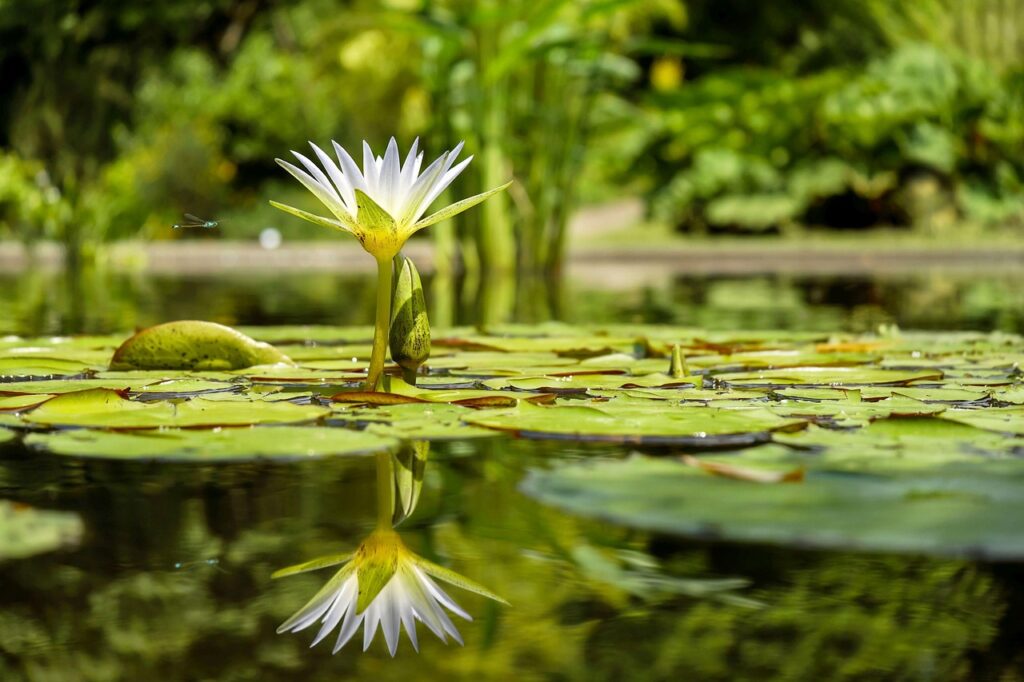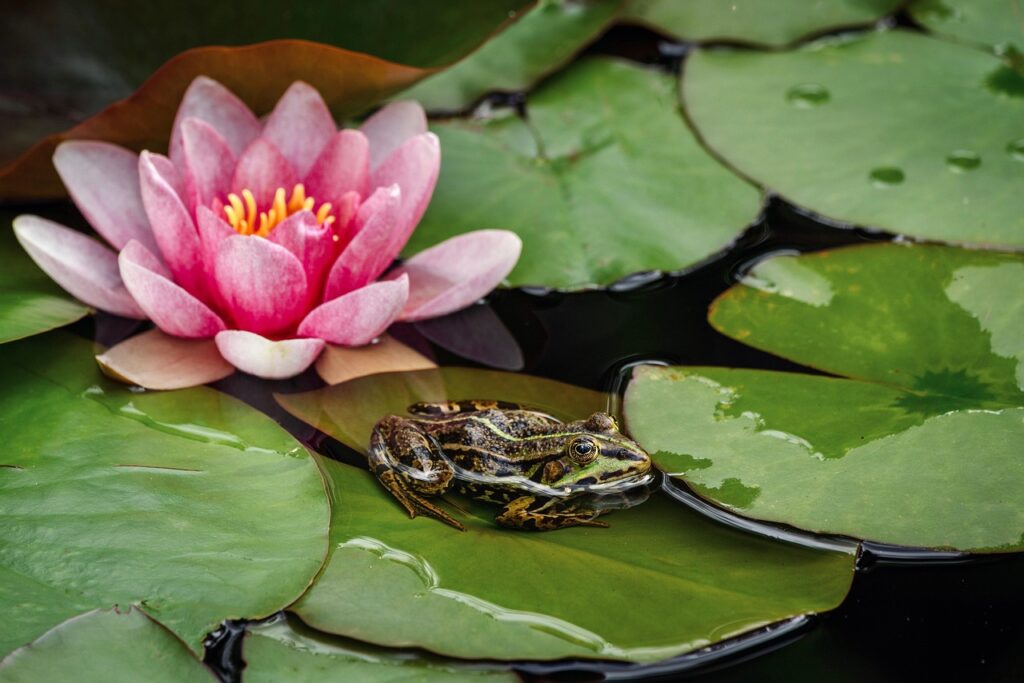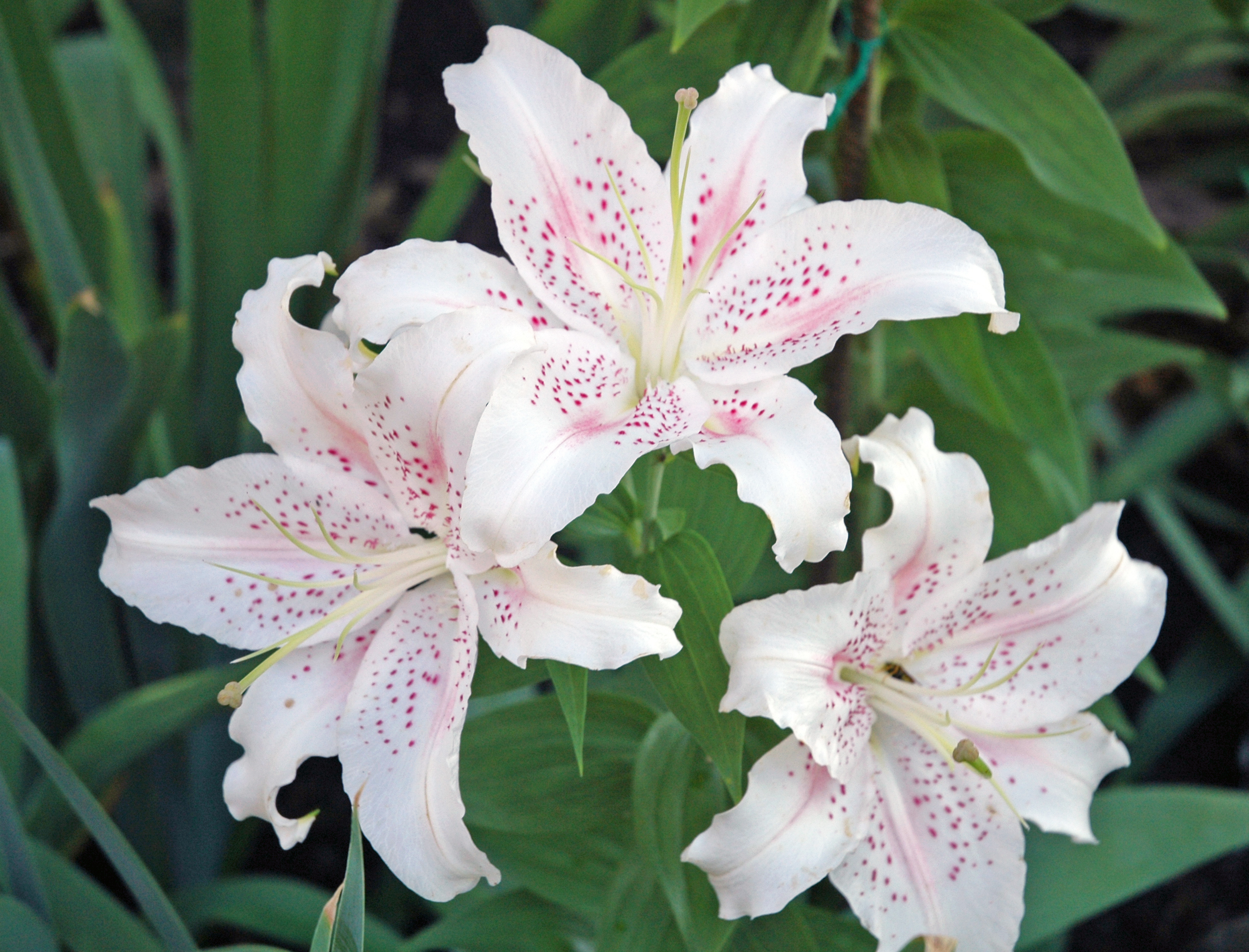
For centuries, the name “lily” has evoked images of grace, purity, and striking beauty in gardens and literature worldwide. Yet, beneath this familiar nomenclature lies a complex botanical reality, where a true lily belongs to the distinguished genus *Lilium*. This distinction is crucial, as countless other flowering plants, despite bearing “lily” in their common names, do not share the intrinsic genetic and morphological characteristics of these genuine floral aristocrats.
Our journey delves into the intricate world of *Lilium*, a genus of herbaceous flowering plants that captivates with its large, often prominent flowers emerging from sturdy bulbs. From its extensive native range across the Northern Hemisphere, spanning temperate climates into the subtropics, to its profound cultural and literary significance, the true lily stands as a testament to nature’s enduring artistry and adaptability.
This in-depth exploration will meticulously uncover the multifaceted aspects of true lilies, from their precise botanical identity and detailed physiological structures to their ecological interactions, the careful art of their cultivation, and the celebrated varieties that have garnered horticultural accolades. We embark on a comprehensive survey designed to illuminate the scientific rigor and timeless allure that define the genus *Lilium*.
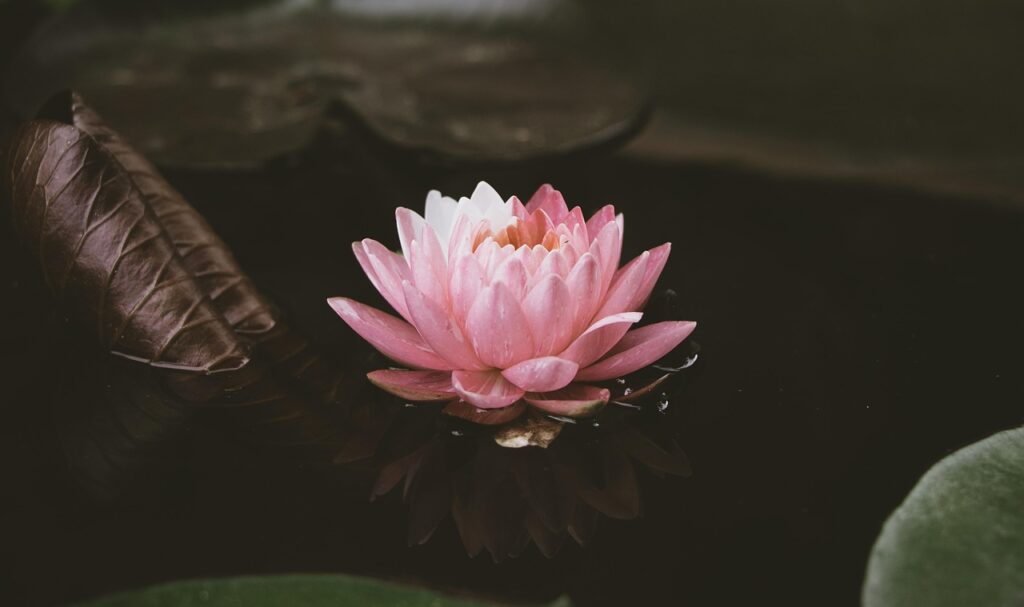
1. **The True Identity of Lilies: Botanical Classification and Core Characteristics**The genus *Lilium* represents a distinct group within the plant kingdom, specifically classified under the order Liliales and the family Liliaceae. These are, fundamentally, herbaceous flowering plants that originate from bulbs, forming the very essence of what constitutes a “true lily.” This botanical lineage grants them a unique position, differentiating them from numerous other plants that merely share a common name.
Culturally and literarily, lilies hold a venerable status across the globe, their imagery woven into the fabric of human expression for millennia. Most species of this significant genus are indigenous to the Northern Hemisphere, thriving in temperate climates and extending their reach into subtropical zones, showcasing a remarkable breadth of adaptation to diverse environmental conditions.
An important factual note, often overlooked by enthusiasts, concerns the toxicity of true lilies. It is well-established that plants within the *Lilium* genus are highly toxic to cats. This critical piece of information underscores the importance of proper identification and awareness for pet owners, as ingestion can lead to severe health consequences.
2. **Unveiling Lily Morphology: From Bulbs to Blooms**Lilies are typically tall perennials, displaying a considerable range in height, from approximately 1 foot (30 cm) to an impressive 6 feet (180 cm). Their longevity is largely attributed to their distinctive underground organs of perennation: or tunicless scaly bulbs. These bulbs serve as vital storage structures, enabling the plants to survive dormant periods and re-emerge with vigor.
Variations in bulb structure are evident across different species; for instance, some North American lilies exhibit rhizomes at the base of their bulbs, which support the formation of numerous smaller bulbs. Other species are noted for developing stolons, further diversifying their subterranean growth patterns. Most lilies feature bulbs buried deep beneath the soil, yet a select few species thrive with their bulbs positioned nearer to the surface.
A remarkable adaptation found in many species is the development of stem-roots. These adventitious roots emerge from the new stem above the bulb as it pushes through the soil each year, complementing the basal roots that form at the bulb’s base. Additionally, some species possess contractile roots, a specialized mechanism that pulls the bulbs deeper into the soil, ensuring optimal positioning for growth and survival.
Lily flowers are renowned for their grandeur and often intoxicating fragrance. They boast a spectacular palette of colors, encompassing crisp whites, vibrant yellows, warm oranges, delicate pinks, passionate reds, and rich purples. Many display intricate markings, such as spots and brush strokes, adding to their visual allure. These splendid blooms typically grace the landscape in late spring or summer, marking a peak season for gardeners and nature lovers.
The flowers are typically borne in racemes or umbels, situated elegantly at the tip of the stem. Each flower features six tepals—a term for petals and sepals that are morphologically indistinguishable—which can either spread outwards or reflex strongly, creating forms that range from funnel-shaped to the distinctive “Turk’s cap” appearance. Nectaries are present at the base of each tepal, attracting pollinators, while the ovary is ‘superior’, positioned above the attachment point of the anthers. The mature fruit is a three-celled capsule, containing seeds that ripen in late summer and exhibit varied, often complex, germination patterns adapted to cool temperate climates. Most cool temperate species are deciduous, entering dormancy in winter, while some species native to regions with hot summers and mild winters experience a short summer or autumn dormancy, sprouting from autumn to winter to form a basal rosette of leaves before elongating their stems in warming weather, following sufficient chilling. The basic chromosome number for Lilium is consistently twelve (n=12).
3. **A World of Lilies: Distribution and Diverse Habitats**The geographical reach of the genus *Lilium* is remarkably extensive, illustrating its adaptability across a vast array of ecological niches. In the Old World, lilies naturally occur across much of Europe, stretching across the majority of Asia to Japan, extending southward into India, and reaching eastward into Indochina and the Philippines. This broad distribution highlights their capacity to thrive in diverse Eurasian environments.
Similarly, in the New World, the presence of lilies is significant, extending from the southern regions of Canada throughout a substantial portion of the United States. This bimodal distribution across continents underscores the genus’s ancient lineage and its successful evolutionary journey across varied landscapes and climatic zones.
Ecologically, lilies are predominantly adapted to either woodland habitats, frequently found in montane regions, or to grassland environments. These preferences indicate a general requirement for specific light conditions and soil compositions characteristic of these biomes. A select few species demonstrate an ability to survive in marshland conditions, a testament to their phenotypic plasticity.
Intriguingly, some epiphytic lilies are known to exist in the tropical regions of Southeast Asia, further broadening the ecological spectrum of the genus. Despite this diversity, a common thread in their habitat requirements is a general preference for moderately acidic or lime-free soils, suggesting a specific geochemical interaction vital for their healthy growth and proliferation.
Read more about: An In-Depth Exploration of the Genus Lilium: Unveiling the Botanical and Cultural Significance of True Lilies
4. **The Ecology of Lilies: Interactions and Challenges**Lilies, like many plant species, are integral components of their ecosystems, participating in complex food webs. They serve as food plants for the larvae of certain Lepidoptera species, including the Dun-bar moth. This interaction highlights their role in supporting insect biodiversity and the delicate balance of natural habitats.
However, lilies face significant ecological challenges, particularly in North America, where the proliferation of deer populations, such as *Odocoileus virginianus*, poses a substantial threat. This increase in deer numbers is primarily attributed to factors like the elimination of large predators, which historically regulated their populations, largely due to human safety concerns.
This imbalance has led to a noticeable downturn in wild lily populations and presents a serious risk to cultivated garden lilies. The voracious browsing habits of deer can devastate lily plants, consuming stems and leaves with considerable efficiency. Addressing this issue in garden settings often requires fences as high as 8 feet, an impractical and often impossible solution for vast wild areas, making conservation a complex endeavor.
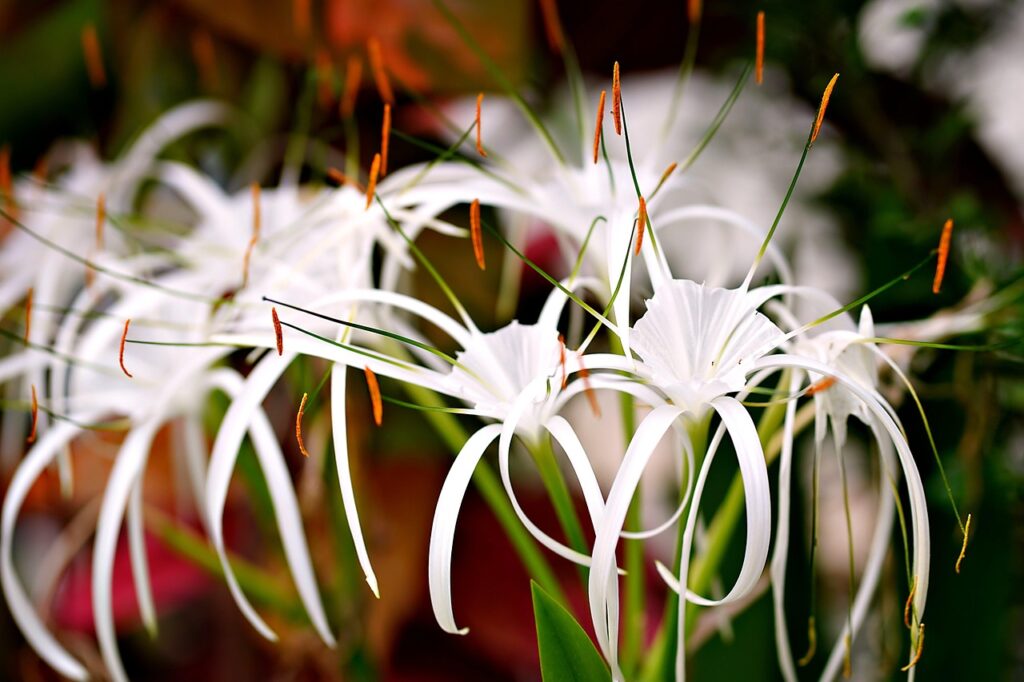
5. **Cultivating Garden Splendor: Planting and Care**Many *Lilium* species are enthusiastically grown in gardens across temperate, sub-tropical, and tropical regions, testament to their widespread appeal and adaptability. Horticulturalists have developed numerous ornamental hybrids, expanding the aesthetic diversity and appeal of these plants. Lilies are versatile additions to the garden, finding their place in herbaceous borders, within woodland and shrub plantings, and even as charming patio plants in containers.
Beyond their ornamental value, some lilies, particularly *Lilium longiflorum*, hold significant economic importance as cut flower crops and potted plants. These are often ‘forced’ to flower outside their natural blooming season to meet specific market demands, such as *Lilium longiflorum* for the Easter trade, where it is affectionately known as the “Easter lily.”
Successful cultivation typically begins with planting bulbs during their dormant season. For optimal growth, lilies are best situated in a south-facing aspect in the northern hemisphere, on a slightly sloping site to ensure good drainage. They thrive in conditions ranging from full sun to part shade. The ideal planting depth is generally 2½ times the height of the bulb, with a notable exception being *Lilium candidum*, which prefers to be planted near the soil surface.
Most lilies prefer a porous, loamy soil, and impeccable drainage is paramount to prevent bulb rot. A soil pH around 6.5 is generally considered safe and conducive to healthy growth. During the growing season, consistent watering is essential to support their vigorous development. While some species and cultivars possess robust, wiry stems, those that produce heavy flower heads often benefit from staking to maintain their upright posture and prevent damage. The flowering periods vary; while most species bloom in July or August in the northern hemisphere, some begin in late spring, and others extend into late summer or early autumn, offering a prolonged season of beauty. It’s worth noting that lilies have contractile roots that naturally pull the plant to the correct depth over time, so planting them slightly too shallowly is generally preferable to planting them too deeply.
6. **Horticultural Acclaim: Species and Cultivars with Royal Horticultural Society Awards**Recognition from esteemed horticultural bodies speaks volumes about a plant’s garden performance and aesthetic appeal. The Royal Horticultural Society’s Award of Garden Merit (AGM) is a prestigious accolade bestowed upon plants that have proven to be excellent for general garden use. As of 2017, several *Lilium* species and cultivars proudly held this distinguished award, affirming their reliability and beauty in cultivation.
Among the celebrated recipients is ‘Golden Splendor’, a cultivar from the African Queen Group, recognized for its robust qualities. ‘Casa Blanca’, another notable hybrid, has also earned its place among the award winners, known for its elegant white blooms. Other acclaimed varieties include ‘Fata Morgana’, ‘Garden Party’, and the broader Golden Splendor Group, each contributing unique charm to the horticultural landscape.
Specific *Lilium* species have also been honored with the AGM, underscoring their inherent garden worthiness. These include *Lilium henryi*, a species cherished for its striking orange flowers, and *Lilium mackliniae*. The classic *Lilium martagon*, commonly known as the Turk’s cap lily, and *Lilium pardalinum*, the leopard lily, are also among the awardees, testament to their distinctive forms and resilience. Furthermore, the Pink Perfection Group and the regal *Lilium regale*, often called the king’s lily, complete this distinguished list of recognized lilies, each offering exceptional performance and visual impact in diverse garden settings.

7. **The Garden’s Masterpieces: Categorizing Hybrid Lilies**The immense diversity within the genus *Lilium* has led to the development of countless garden forms, predominantly through hybridization. To bring order and understanding to this extensive array, these cultivated varieties are systematically classified into broad groups. This classification system, based on the species and interspecific hybrids from which they are derived, serves as an invaluable guide for horticulturists, breeders, and gardeners alike, simplifying the selection and care of these magnificent plants.
These classifications delineate nine primary divisions, each representing a distinct lineage and set of characteristics. Divisions I through VIII encompass various hybrid groups, such as the Asiatic, Martagon, Candidum, American, Longiflorum, Trumpet, and Oriental hybrids, along with a category for all other garden hybrids. Division IX is reserved for all natural species and their naturally occurring forms, maintaining a clear distinction between wild and cultivated origins.
Beyond genetic lineage, lily flowers are also categorized by their aspect and form, providing further detail for identification and appreciation. Flower aspects include ‘up-facing,’ where blooms gaze skyward; ‘out-facing,’ presenting their beauty horizontally; and ‘down-facing,’ with pendulous flowers. Flower forms range from ‘trumpet-shaped’ and ‘bowl-shaped’ to ‘flat’ (sometimes with recurved tepal tips) and the dramatically ‘tepals strongly recurved,’ culminating in the iconic Turk’s cap form. These detailed descriptors allow for a precise appreciation of each lily’s unique aesthetic.
Modern advancements in plant science have further expanded the possibilities in lily breeding. New technologies such as ovary culture and embryo rescue are now routinely employed to develop innovative commercial varieties. These techniques allow breeders to overcome compatibility barriers and achieve successful crosses that would be difficult or impossible through traditional methods, continually enriching the world of cultivated lilies with novel and stunning forms.
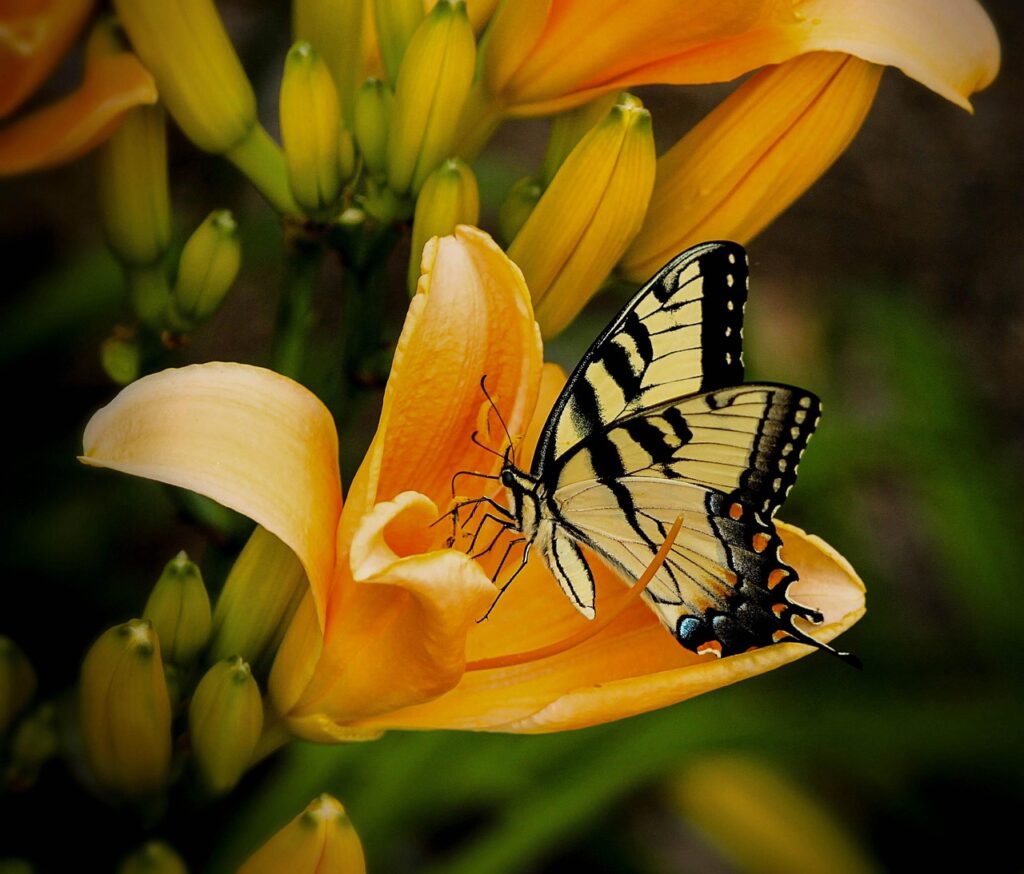
8. **Diving Deeper into Hybrid Divisions: A Closer Look at Cultivated Forms**Building upon the broad classification introduced previously, the world of cultivated lilies unfolds into distinct hybrid divisions, each with unique characteristics shaped by their ancestral species. These groupings are vital tools for horticulturists and gardeners, simplifying the navigation of *Lilium*’s vast diversity. Each division represents a triumph of selective breeding, aiming to enhance specific aesthetic qualities, adaptability, or disease resistance, thereby enriching gardens and floral arrangements worldwide.
Division I, known as Asiatic hybrids, is perhaps the most widely recognized for its robust nature and striking, often unscented, blooms. Derived from species within the *Lilium* section Sinomartagon, including prominent examples like *Lilium davidii* and *Lilium lancifolium*, these hybrids feature medium-sized, upright or outward-facing flowers. Varieties such as ‘Cappuccino’, ‘Dimension’, and the popular ‘Lily Looks’ series, which includes dwarf cultivars like ‘Tiny Padhye’ and ‘Tiny Dessert’ designed for containers, exemplify their broad appeal and versatility.
Moving to Division II, Martagon hybrids stand apart with their distinctive nodding, Turk’s cap-style flowers, characterized by strongly recurved tepals. These hybrids trace their lineage to species such as *Lilium martagon* and *Lilium hansonii*. Division III, the Candidum or Euro-Caucasian hybrids, encompasses historically significant species like *Lilium candidum* (the Madonna lily) and *Lilium pyrenaicum*, contributing to some of the most classic lily forms known for their elegant, often white, blossoms.
Division IV comprises the American hybrids, typically taller-growing forms derived from North American native species like *Lilium canadense* and *Lilium pardalinum*. Many of these are clump-forming perennials, often distinguished by rhizomatous rootstocks. Division V, the Longiflorum hybrids, are predominantly cultivated forms of *Lilium longiflorum*, prized globally as cut flowers and potted plants, especially the ‘Easter lily’ forced for specific seasonal markets.
Division VI introduces the Trumpet lilies, including the Aurelian hybrids, which often involve *Lilium henryi*. These magnificent lilies, such as *Lilium regale* and *Lilium sulphureum*, boast trumpet-shaped flowers that face outward or downward, frequently exuding a powerful, often night-fragrant, aroma. Lastly, Division VII, the Oriental hybrids, are based on species from the *Lilium* section Archelirion, notably *Lilium auratum* and *Lilium speciosum*. These hybrids are celebrated for their large, fragrant, outward-facing flowers and are sometimes collectively referred to as “stargazers” for their upward gaze, creating dramatic focal points in any garden. Division VIII is a catch-all for all other garden hybrids that do not fit neatly into the preceding categories, showcasing the ongoing innovation in lily breeding, while Division IX is reserved for all natural species and their naturally occurring forms, maintaining a clear distinction between wild and cultivated origins.
9. **Navigating the Perils: Pests, Diseases, and Management Strategies**Even in their cultivated splendor, lilies are not immune to the myriad challenges posed by pests and diseases, which can significantly impact their health and aesthetic appeal. Understanding these threats and implementing effective management strategies is crucial for ensuring vigorous growth and abundant blooms. From microscopic pathogens to larger herbivores, lilies face a diverse range of adversaries in both wild and garden settings.
Among the more common insect pests, aphids can infest plants, weakening them by feeding on sap. Leatherjackets, the larvae of crane flies, pose a threat by consuming lily roots, often unnoticed until significant damage has occurred. However, arguably the most notorious and destructive pest for true lilies is the scarlet lily beetle (*Lilioceris lilii*), a bright red insect whose larvae can voraciously strip stems and leaves, causing severe defoliation and potentially leading to plant death. This beetle exclusively targets *Lilium* and *Fritillaria* species, bypassing daylilies, but its impact on vulnerable native North American species and garden cultivars is a serious concern, often requiring diligent monitoring and intervention.
Beyond insect damage, larger animals also present significant challenges. Mice, deer, and squirrels are known to cause damage to lily bulbs and foliage. In North America, the proliferation of deer populations, often due to the absence of natural predators, has led to a noticeable downturn in wild lily populations and poses a constant threat to garden lilies, necessitating protective measures like tall fences in cultivated areas. On the ground level, slugs, snails, and millipedes can wreak havoc on tender seedlings, leaves, and flowers.
Fungal and viral pathogens further complicate lily cultivation. Brown spots on damp leaves, especially in humid conditions, can signal an infection of *Botrytis elliptica*, commonly known as Lily blight or lily fire. This aggressive fungal disease can spread rapidly, causing necrosis and defoliation. Various viral diseases, including lily curl stripe, ringspot, and lily rosette virus, can manifest as mottling of leaves, stunted growth, and distorted flowers, often spread by sap-feeding insects. Effective disease management relies on good garden hygiene, proper spacing for air circulation, and, in severe cases, the removal of infected plants to prevent wider spread.

10. **The Art and Science of Propagation: Expanding Lily’s Reach**The propagation of lilies, a fascinating blend of traditional horticultural wisdom and modern biotechnological innovation, allows for the perpetuation and expansion of their breathtaking diversity. Gardeners and commercial growers employ a variety of methods, each suited to different species, goals, and scales of production, ensuring that these iconic flowers continue to grace gardens and markets.
One of the most straightforward and traditional methods is the division of bulbs. As lilies mature, their bulbs naturally produce offsets, or smaller bulblets, which can be carefully separated from the parent plant during dormancy and replanted to grow into new, genetically identical individuals. Another intriguing natural propagation method involves bulbils, which are small adventitious bulbs that form on the stem, particularly in certain species like the tiger lily. These can be harvested and grown on to produce new plants, offering an efficient way to increase stock.
Scaling is another popular and effective aual propagation technique. It involves carefully detaching individual scales from a mature lily bulb and planting them in a suitable medium. Each scale has the potential to form one or more new bulblets at its base, which will then develop roots and eventually grow into full-sized plants. This method allows for a significant increase in plant numbers from a single bulb, making it a valuable tool for both enthusiasts and commercial breeders.
Propagation by seed, while often more challenging due to varying and sometimes complex germination patterns, especially in cool temperate species, is crucial for breeding new varieties and maintaining genetic diversity. Seeds, which ripen in late summer within a three-celled capsule, can exhibit patterns like epigeal (above-ground) or hypogeal (below-ground) germination, some requiring cold stratification or even a two-stage process of warmth followed by cold to break dormancy, a testament to their evolutionary adaptations to diverse climates.
Modern advancements in plant science have revolutionized lily propagation, particularly through micropropagation techniques, including tissue culture. These laboratory-based methods allow for the rapid, large-scale production of genetically identical plants from a small piece of tissue, ensuring uniformity and disease-free stock. Commercial quantities of lilies are routinely propagated *in vitro* before being planted out. Researchers like Yadav et al. (2013) have developed highly efficient techniques for multiple shoot and propagule formation, further enhancing commercial viability. Additionally, plant growth regulators (PGRs) such as ancymidol and paclobutrazol are commonly applied to foliage in potted plant production to limit stem height by slowing gibberellin biosynthesis, ensuring compact and aesthetically pleasing plants for market.
11. **The Palate of the Lily: Diverse Culinary Traditions Across Asia**Beyond their aesthetic charm, lilies have a rich history as a culinary ingredient, particularly in East Asian cuisines, where their starchy bulbs are valued as root vegetables. While some species may have a bitter taste, others are celebrated for their sweetness and versatility, offering a unique texture and flavor profile that can enhance a wide range of dishes.
In Chinese cuisine, lily bulbs are a prominent edible. *Lilium brownii var. viridulum*, known as (bǎi hé), or ‘hundred united,’ is particularly esteemed for its large, non-bitter bulbs. Historically, these were even exported to San Francisco’s Chinatown in the 19th century, available both fresh and dried. The ‘dragon-tooth lily’ (*Lóng yá bǎi hé*), a landrace mainly cultivated in Hunan and Jiangxi, is especially renowned for its superior quality. Other notable edible Chinese lilies include *L. lancifolium* (‘reflexed red’), widely cultivated in areas like Yixing, and *L. davidii var. unicolor* (Lanzhou lily’), valued for its sweetness in Lanzhou.
Dried lily bulbs are a common ingredient in southern Chinese soups, lending a delicate flavor and slight thickening. They can be reconstituted and stir-fried, or processed to extract starch. While their texture and taste are sometimes compared to potatoes, the individual bulb scales are much smaller, offering a distinct culinary experience. It is crucial to note a common confusion: the ‘lily’ flower buds (gold needle vegetable’) frequently used in Chinese cuisine are actually from daylilies (*Hemerocallis citrina*), not true lilies of the *Lilium* genus, highlighting the importance of botanical distinction in culinary practices.
Japanese cuisine also incorporates the lily bulb, or *yuri-ne*, though it may be less common than in Chinese cooking. It is a prized occasional ingredient (*gu*) in savory egg custards like *chawan-mushi*, where a few loosened scales add a subtle flavor and texture. It can also find its way into clear soups, known as *suimono*. Beyond savory applications, boiled lily bulbs are strained into purées for sweets such as the sweetened *kinton* or *chakin-shibori*, showcasing their adaptability in both traditional Japanese dishes and confectionery.
Japanese governmental sources identify *Lilium lancifolium* (oni yuri or tiger lily), *Lilium leichtlinii var. maximowiczii* (kooni yuri), and *Lilium auratum* (yama-yuri or gold-banded white lily) as prominent species for domestic consumption. Historical sources also mention the *sukashi-yuri* (*L. maculatum*). These culinary traditions not only celebrate the lily’s taste but also its perceived health benefits, as lily flowers and bulbs are often eaten in summer for their perceived ability to reduce ‘internal heat’ in traditional beliefs.
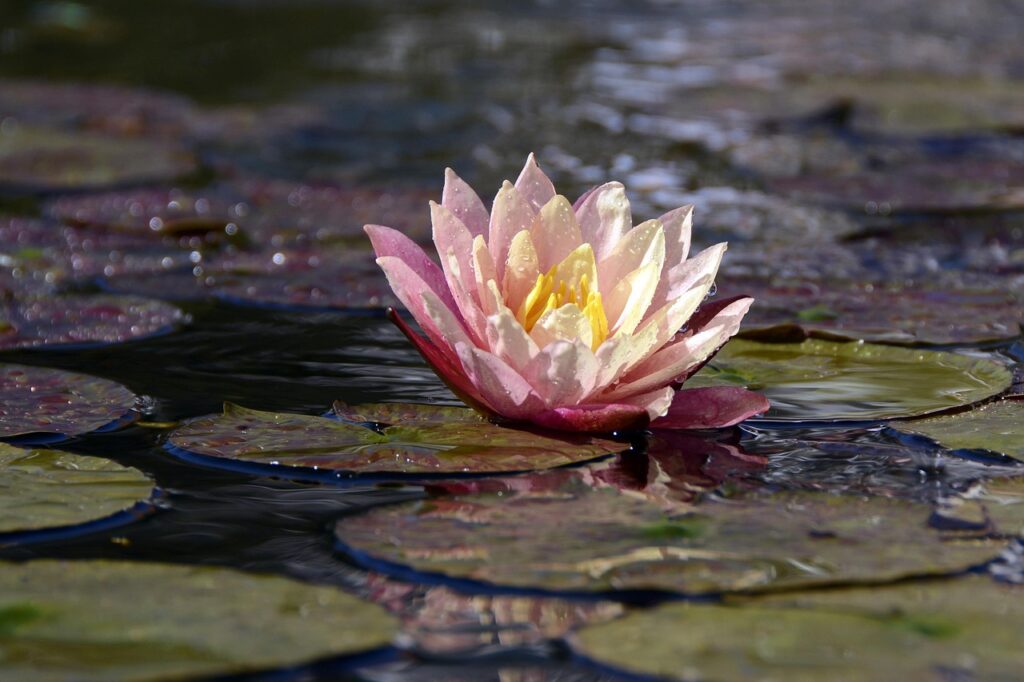
12. **Lily in the Americas: Indigenous Culinary Practices and a Critical Health Note**While East Asian cultures have extensively integrated lily bulbs into their cuisines, indigenous peoples of North America also share a historical connection with the culinary use of native *Lilium* species. These traditions highlight a deep understanding of local flora and its nutritional value, demonstrating another facet of the lily’s utility beyond its ornamental beauty.
The flower buds and roots of *Lilium columbianum*, the Columbia lily, have been traditionally gathered and consumed by various North American indigenous peoples. Tribes such as the Coast Salish, Nuu-chah-nulth, and many western Washington communities would steam, boil, or pit-cook these bulbs. While often described as bitter or peppery-tasting, they were primarily used as a flavoring agent, frequently incorporated into soups with meat or fish, adding a distinctive element to their traditional diets.
As our exploration of lilies touches upon their consumption, it is imperative to address a critical health warning, particularly concerning household pets. True lilies (*Lilium* species) are known to be highly toxic to cats. This toxicity has been well-documented for *Lilium longiflorum*, but other species within the genus, as well as the unrelated *Hemerocallis* (daylilies), can cause equally severe symptoms, potentially leading to acute kidney failure and high mortality rates.
The precise mechanism of this toxicity remains undetermined, but it is known to cause significant damage to the renal tubular epithelium, the functional tissue of the kidney. Veterinary help is urgently advised for any cat suspected of ingesting any part of a lily, even if it’s just licking pollen that may have brushed onto its coat. Prompt medical intervention, ideally before symptoms develop, is crucial given the high mortality rate associated with lily poisoning in felines. This stark reminder underscores the dual nature of these plants, beautiful and culturally significant, yet capable of harm under specific circumstances.
13. **Healing with Lilies: Traditional and Modern Medicinal Applications**Beyond their ornamental and culinary roles, lilies have long been recognized for their medicinal properties, finding a significant place in various traditional healing systems across the globe. These applications highlight a deep-rooted understanding of the plant’s compounds and their potential therapeutic effects, contributing to holistic approaches to health and well-being.
In Traditional Chinese Medicine (TCM), several *Lilium* species are listed for their medicinal use. Notable among these are *Lilium brownii*, *Lilium brownii var. viridulum*, *Lilium concolor* , *Lilium dauricum* , *Lilium lancifolium* (), *Lilium pumilum* (), *Lilium rosthornii*, *Lilium speciosum var. gloriosoides* , and *Lilium sulphureum* . These species are often prepared in various forms to address a range of conditions, traditionally valued for their perceived ability to reduce internal heat and support respiratory health, among other uses.
Governmental publications in Taiwan similarly acknowledge the medicinal value of specific lily species, officially listing *Lilium lancifolium Thunb.*, *Lilium brownii var. viridulum Baker*, and *Lilium pumilum DC.* for their therapeutic applications. This official recognition underscores the continued importance of these plants in regional pharmacopoeias and traditional healthcare practices, integrating botanical knowledge with health and wellness.
In Japan, the practice of *kanpō*, a form of traditional Chinese medicine adapted for Japanese contexts, also incorporates lily bulbs. The official Japanese governmental pharmacopeia, *Nihon yakkyokuhō*, includes the use of lily bulb, known as *byakugō* (ビャクゴウ 百合) in traditional pharmacological circles. The species listed for this purpose include *Lilium lancifolium*, *Lilium brownii*, *Lilium brownii var. colchesteri*, and *Lilium pumilum*. Typically, the scales flaked off from the bulbs are used, often after being steamed, to harness their medicinal properties.
South Korea also officially lists *Lilium lancifolium Thunberg* (참나리) and *Lilium brownii var. viridulun Baker* (당나리) for medicinal use, further illustrating the widespread and cross-cultural recognition of lilies’ therapeutic potential throughout East Asia. While specific mechanisms are subject to modern scientific scrutiny, the centuries of traditional use provide compelling evidence of the profound role lilies have played in human health.
14. **Lilies in the Tapestry of Humanity: Symbolism and Heraldry**From ancient religious rites to modern cultural expressions, lilies have woven themselves deeply into the fabric of human symbolism and heraldry, transcending mere botanical existence to become powerful emblems of diverse meanings. Their striking beauty and elegant forms have inspired artists, poets, and communities for millennia, reflecting purity, love, courage, and remembrance.
In the intricate Victorian language of flowers, lilies convey profound sentiments of love, ardor, and affection for loved ones. Specifically, orange lilies are often associated with happiness, love, and warmth, adding a vibrant layer to their symbolic lexicon. This nuanced understanding of floral messages allowed for subtle communication within a society that often valued indirect expression.
Across cultures, lilies hold varied but equally potent meanings. In Japanese literature from the Romantic era, white lilies became a de facto symbol for beauty and purity in women, significantly influencing the *yuri* genre (百合), which literally translates to “lily.” This term describes the portrayal of intimate love, , or emotional connections between women, a usage that gained traction with the coining of ‘Yurizoku’ (lily tribe) in 1976. This association has since expanded, with ‘lily’ serving as a semantic loan in Korean (*baekhap*) and Chinese (*bǎihé*) to describe female-female romance media, underscoring its broad cultural resonance.
For many, lilies are intrinsically linked with somber occasions, being the flowers most commonly chosen for funerals. In this context, they symbolically signify that the soul of the deceased has been restored to a state of innocence, offering solace and a sense of peaceful transition. This powerful association speaks to the lily’s enduring representation of purity and renewal in the face of loss.
Indigenous communities in Taiwan offer a localized perspective on lily symbolism. The Hakka ethnic group refers to *Lilium formosanum* (Taiwanese lily) as “the flower of broken bowl” (打碗花), believing that harming this lily, which grows near clean water, could damage the environment—much like breaking the bowls people rely on for sustenance. Conversely, the indigenous Rukai people view the same species, which they call *bariangalay*, as a symbol of bravery and perseverance, highlighting contrasting yet equally profound cultural interpretations. In Western Christianity, the Madonna lily (*Lilium candidum*) has been intertwined with the Virgin Mary since the Medieval Era, frequently depicted in scenes of the Annunciation and Christ’s resurrection, while *Lilium longiflorum*, the Easter lily, is a quintessential symbol of Easter, embodying hope and new beginnings.
Beyond cultural symbolism, lilies have found their way into official heraldry and state emblems. *Lilium bulbiferum* has long been recognized as a symbol of the Orange Order in Northern Ireland, linking the plant to specific historical and political identities. *Lilium mackliniae* is the state flower of Manipur, while *Lilium michauxii*, the Carolina lily, holds the official state flower designation for North Carolina. The Lemon Lily Festival in Idyllwild, California, celebrates *Lilium parryi*, fostering local pride in this distinctive species. Furthermore, *Lilium philadelphicum* is the floral emblem of Saskatchewan province in Canada, proudly featured on its flag, cementing the lily’s enduring legacy as a potent and cherished symbol across diverse human endeavors.

